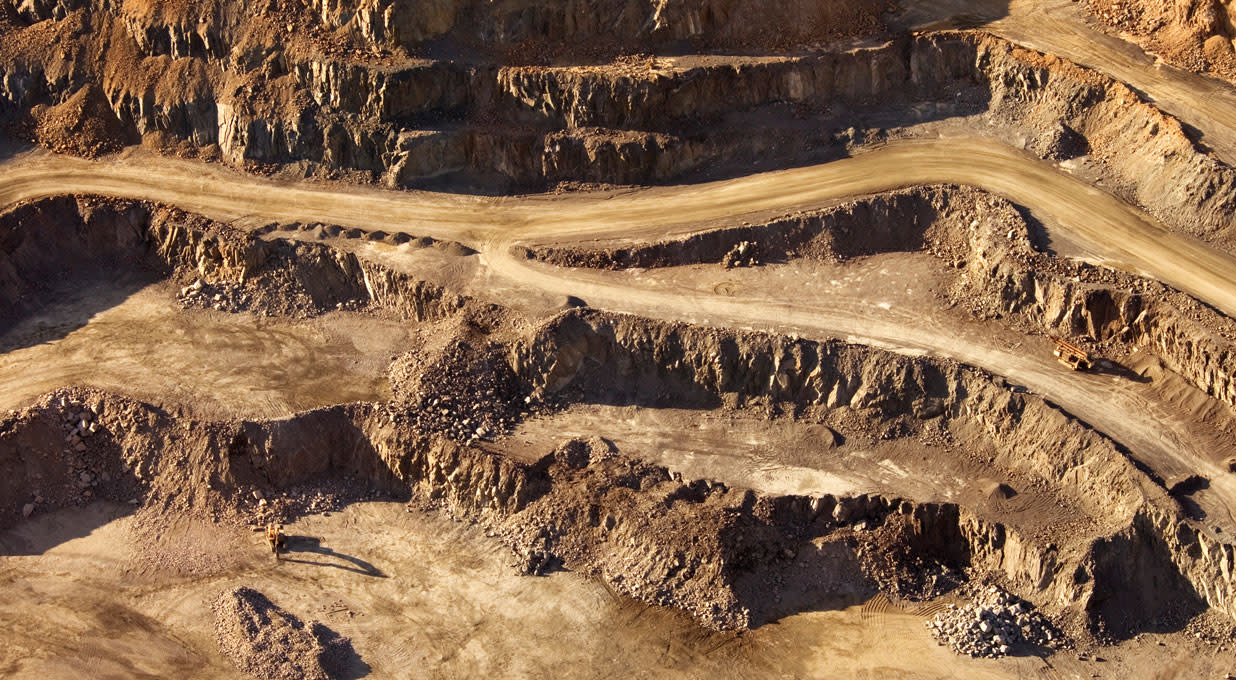Barrick reported a 14% rise in first quarter revenue to $3.1bn. Gold and copper realised prices were up 40% and 17% respectively. Copper production rose 10%, but gold was down 19% as the site in Mali remains suspended.
Underlying cash profit (EBITDA) rose 50% to $1.4bn, driven by higher revenue and an 8% drop in cost of sales.
Free cash flow rose from $32mn to $375mn, and net debt at the end of the quarter was 20% lower at $623mn.
A quarterly dividend of $0.10 was announced and $143mn of shares were bought back over the quarter.
The shares were down 0.8% in pre-market trading.
Our view
Barrick is riding on the coat tails of higher gold prices, and for now that’s providing enough of a boost to provide decent cash flows. But ongoing tensions in Mali are keeping a lid on things.
The Loulo-Gounkoto operation is still suspended after a run-in with the local Mali government. Barrick has an 80% stake in the operation, and it accounts for about 15% of total gold production when running. That’s enough to move the dial and a key cause for concern.
That said, Barrick’s in the first innings of a new 5-year plan, and production challenges in the near term extend beyond Mali. The good news is that expectations have now been reset and the valuation looks to have most of this built in already.
Barrick has missed its original gold cost guidance for the past 3 years. A mix of lower production and increased maintenance have also been adding pressure to all-in costs. We don’t see much near-term let-up, as higher investment at the key Nevada sites is an ongoing headwind. First quarter cost of sales only fell because of lower production and sales volumes, not through improved efficiency.
Squeezing more from existing mines can be a particularly powerful driver for the group - since costs rarely increase in line with output. On that note, the expansion of the low-cost Pueblo Viejo mine and ramp up of the Porgera mine are both positive catalysts for gold production over the short and medium term.
Copper is becoming an ever-growing part of the mix too, with plans to more than double production levels by 2029. There’s been some solid progress at two key copper sites but it’s going to cost, with planned capex at the group level of $16bn over the next 5 years.
The balance sheet is in decent shape, but the lack of net cash position means there’s no scope for dividends beyond the base level. The company is taking the depressed valuation as a chance to buy back its own shares and has given itself the green light to buy back up to $1bn over the coming year – though no returns are guaranteed.
Recent production challenges and more recent clashes with the Mali government mean Barrick hasn’t managed to capture the full benefits of elevated gold prices. We’re mindful of the challenges in the short term, but still feel Barrick’s large, diversified, footprint is one of the better options in the gold mining sector. Of course, there are no guarantees.
Environmental, social and governance (ESG) risk
Mining companies tend to come with relatively high ESG risk. Emissions, effluences and waste, and community relations are key risk drivers in this sector. Carbon emissions, resource use, health and safety and bribery, and corruption are also contributors to ESG risk.
According to Sustainalytics, Barrick’s management of material ESG issues is strong.
Barrick has robust ESG policies with best practices like performance targets and independent certification. It has a strong climate change strategy and effective water risk management, using various tools to assess water risks. Barrick is aiming for net-zero emissions, with a 2030 target to reduce operational greenhouse gas emissions by 30% from 2018 levels.
Government relations are key, as we’re seeing play out in Mali, and Barrick’s exposure to areas like Latin America and Africa adds an extra layer of risk.
Barrick key facts
All ratios are sourced from LSEG Datastream, based on previous day’s closing values. Please remember yields are variable and not a reliable indicator of future income. Keep in mind key figures shouldn’t be looked at on their own – it’s important to understand the big picture.
This article is not advice or a recommendation to buy, sell or hold any investment.No view is given on the present or future value or price of any investment, and investors should form their own view on any proposed investment.This article has not been prepared in accordance with legal requirements designed to promote the independence of investment research and is considered a marketing communication.Non - independent research is not subject to FCA rules prohibiting dealing ahead of research, however HL has put controls in place(including dealing restrictions, physical and information barriers) to manage potential conflicts of interest presented by such dealing.Please see our full non - independent research disclosure for more information.


